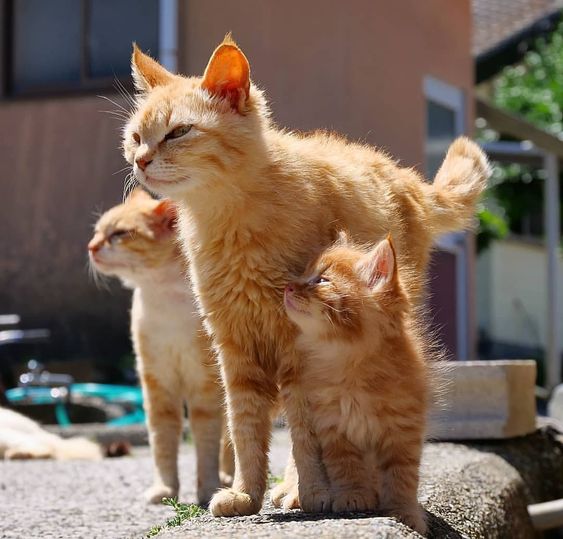
Cat families, from the mighty lions of Africa to the domestic cats curled up on our laps, offer a window into the diversity and intricacy of animal social structures. This article delves into the fascinating lives of cat families, exploring their social dynamics, unique behaviors, cultural symbolism, and the profound connections they forge with humans.

Contents
Social Structure and Dynamics:
At the core of cat families lies the queen (mother cat) and her offspring, forming a tight-knit unit based on maternal care, hierarchy, and communal living. Within these families, roles are established early on, with kittens learning from their mother and siblings through play and observation. This social structure not only promotes survival but also nurtures bonds that are crucial for their emotional well-being and group cohesion.
Behavioral Insights:
Behaviors within cat families range from maternal grooming and play interactions to territorial marking and cooperative hunting. The queen plays a pivotal role in teaching her kittens essential skills, while adult cats maintain social order through communication methods such as vocalizations and body language. These behaviors reflect both innate instincts and learned behaviors that contribute to the family’s stability and success.
Developmental Milestones:
From birth to adulthood, kittens undergo significant developmental stages that shape their physical and behavioral traits. They transition from milk dependency to solid food, mastering hunting techniques and social skills along the way. Each stage of development prepares them for independence and their eventual roles within the family and broader community.


Cultural and Symbolic Importance:
Cat families have held symbolic significance across cultures and civilizations throughout history. From ancient Egypt’s reverence for feline deities to modern-day associations with luck, independence, and companionship, cats have woven themselves into the fabric of human society. Their depiction in art, literature, and folklore reflects their dual role as both independent hunters and cherished companions, enriching human lives with their presence and personalities.
Conservation and Human Interaction:
While domestic cats enjoy a close relationship with humans, wild felids face challenges such as habitat loss, poaching, and human-wildlife conflict. Conservation efforts focus on preserving natural habitats, mitigating human impacts, and promoting coexistence strategies that protect both cat families and their ecosystems. Understanding the complexities of human-cat interactions informs conservation policies that ensure their long-term survival and well-being.
In conclusion, cat families embody a blend of instinctual behaviors, cultural symbolism, and ecological significance that highlight their adaptability and resilience. By exploring their social structures, developmental milestones, and cultural roles, we gain a deeper appreciation for these enigmatic creatures. Whether observed in the wild or cherished as companions, cat families continue to captivate with their grace, intelligence, and enduring bond with humanity.


